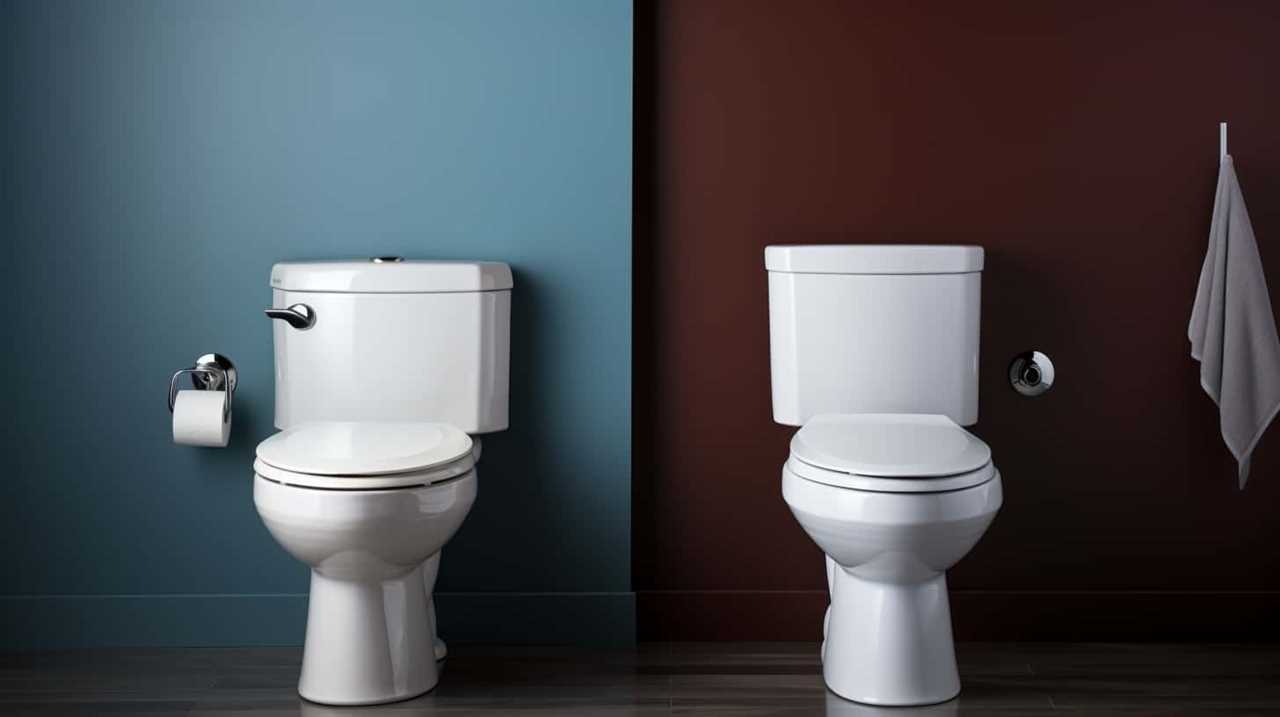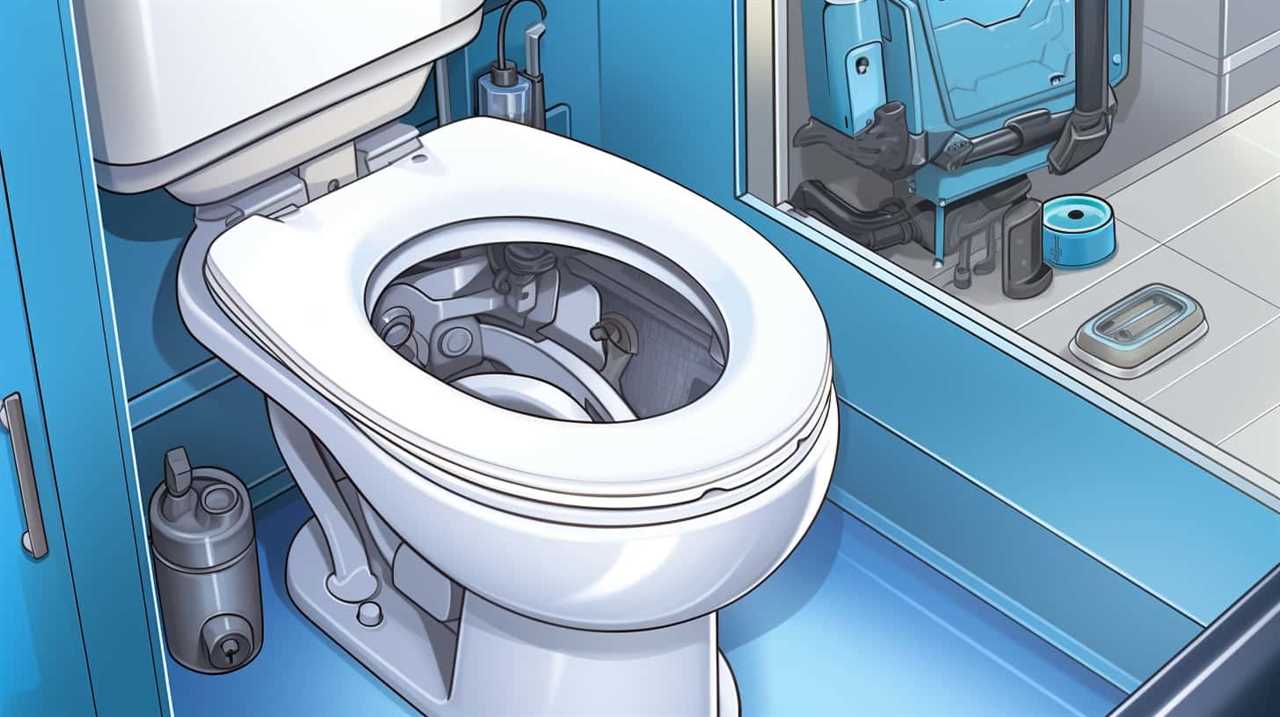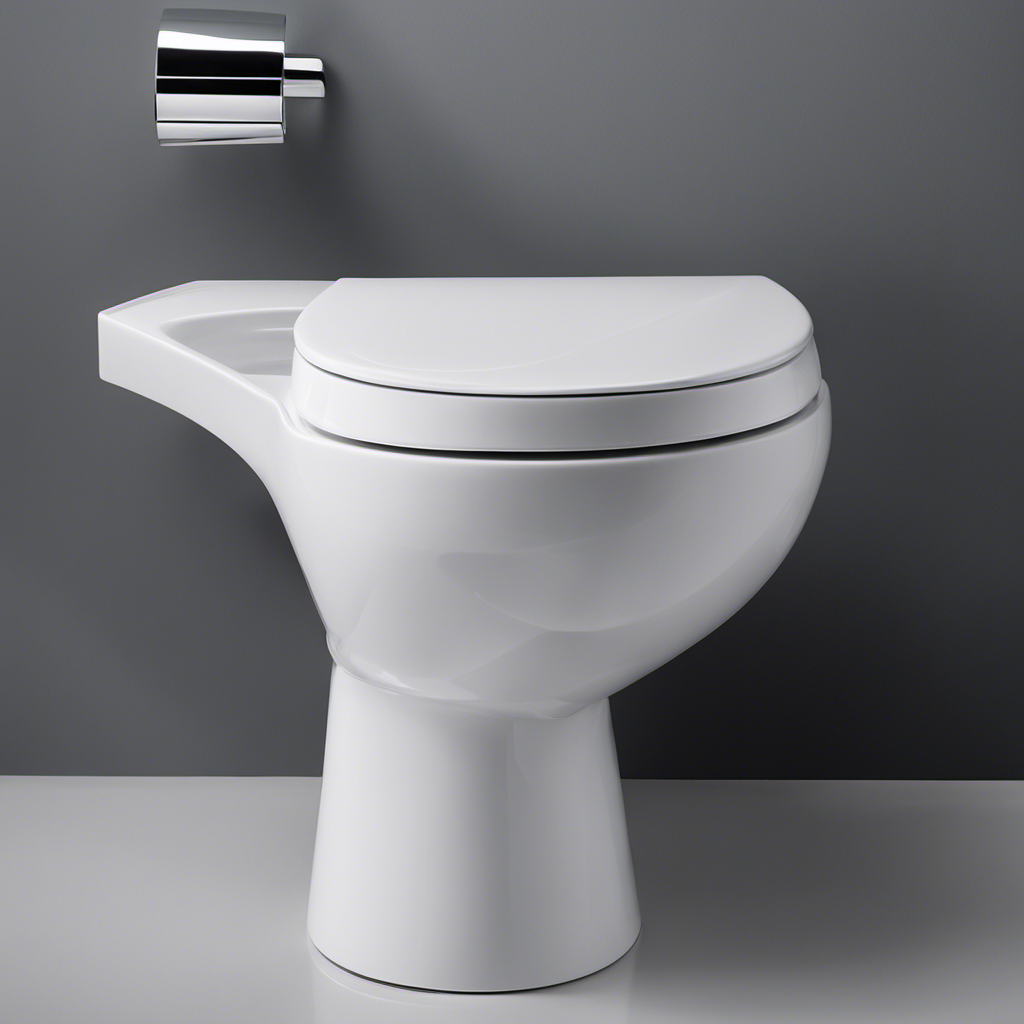We’ve all been guilty of the occasional lazy disposal method, but have you ever wondered if it’s okay to flush tobacco down the toilet?
Well, let’s put it this way: the impact might just surprise you. In this article, we’ll dive into the environmental consequences, plumbing risks, water pollution, and health concerns associated with this questionable habit.
But don’t worry, we’ve got you covered with alternative disposal methods that won’t leave you feeling flushed.
So, let’s get to the bottom of this burning question!

Key Takeaways
- Flushing tobacco introduces harmful chemicals and pollutants into the water system.
- Flushing tobacco can lead to plumbing damage and clogging hazards.
- Flushing tobacco raises health concerns related to nicotine addiction and second-hand smoke exposure.
- Safely discard tobacco in designated disposal bins or explore alternative disposal methods to prevent environmental contamination.
Environmental Impact
The environmental impact of flushing tobacco down the toilet is significant, as it introduces harmful chemicals and pollutants into the water system. This action can have severe ecological consequences and cause damage to the ecosystem.
When tobacco is flushed, it releases toxic substances such as nicotine, heavy metals, and pesticides into the water. These chemicals can contaminate the water supply and harm aquatic life. Nicotine, in particular, is highly toxic to fish and other organisms, disrupting their reproductive and metabolic systems.
Additionally, the presence of tobacco pollutants can alter the pH levels of the water, leading to further harm to aquatic plants and animals.
It’s crucial to dispose of tobacco properly to prevent ecosystem damage and protect water quality.

Plumbing Risks
When it comes to flushing tobacco down the toilet, we need to consider the potential plumbing risks involved. Flushing tobacco can lead to plumbing damage and clogging hazards.
The fibers in tobacco products, such as cigarettes or chewing tobacco, don’t easily break down in water. Instead, they can accumulate and create blockages in the pipes. Over time, these blockages can cause water to back up, leading to costly repairs and potential flooding.
Additionally, tobacco residue can stick to the inside of the pipes, further contributing to clogs and reducing water flow. It’s best to dispose of tobacco products in the trash or designated containers to avoid these plumbing risks.
Taking this proactive approach can help maintain the integrity of your plumbing system and prevent unnecessary damage.

Water Pollution
Our efforts to combat water pollution are jeopardized by flushing tobacco down our toilets. This practice contributes to water contamination and causes significant ecosystem damage. Here are four reasons why flushing tobacco down the toilet is harmful:
- Chemical pollution: The chemicals present in tobacco, such as nicotine and heavy metals, contaminate the water supply, harming aquatic organisms and disrupting the delicate balance of aquatic ecosystems.
- Microplastic pollution: Cigarette filters contain plastic fibers that don’t readily biodegrade. Flushing them down the toilet introduces microplastics into water bodies, where they can be ingested by marine life, causing further harm.
- Altered water quality: The chemicals in tobacco can alter the pH levels and oxygen levels in water, negatively impacting aquatic plants and animals.
- Bioaccumulation: The toxins from tobacco can accumulate in the bodies of aquatic organisms, passing up the food chain and potentially affecting larger animals, including humans.
By understanding the detrimental effects of flushing tobacco down the toilet, we can make more informed decisions that protect our water resources and minimize ecosystem damage.
These concerns also extend to our health, as we’ll explore in the next section.
Health Concerns
Flushing tobacco down the toilet raises significant health concerns for all individuals involved.

One of the main concerns is nicotine addiction. Nicotine is a highly addictive substance found in tobacco, and flushing it down the toilet can contribute to the environmental contamination of water sources. This can potentially expose aquatic life to nicotine and other harmful chemicals present in tobacco.
Moreover, the act of flushing tobacco can release second-hand smoke particles into the air, posing a risk to individuals nearby. Second-hand smoke contains numerous toxic chemicals that can cause respiratory problems, heart disease, and even cancer.
Therefore, it’s crucial to dispose of tobacco properly to minimize the health risks associated with nicotine addiction and exposure to second-hand smoke.
Alternative Disposal Methods
One option we can consider for disposing of tobacco is to safely discard it in designated disposal bins. These bins are specifically designed to handle the disposal of tobacco products and ensure that they’re disposed of properly. By using these bins, we can prevent the harmful substances in tobacco from seeping into the environment and causing damage.

When it comes to alternative disposal methods, there are a few options to consider:
- Composting: Some tobacco products, such as loose tobacco leaves or cigarette butts, can be composted. However, it’s important to follow proper composting guidelines to ensure that the tobacco is fully broken down and doesn’t contaminate the compost.
- Recycling: Certain components of tobacco products, like cigarette filters, can be recycled. Check with your local recycling facilities to see if they accept these items.
- Hazardous waste disposal: If you’re unsure about the proper disposal method for your tobacco products, it’s best to treat them as hazardous waste and dispose of them accordingly. Contact your local waste management authorities for guidance on how to properly dispose of these items.
- Return programs: Some tobacco companies offer return programs for their products. These programs allow consumers to send back their used tobacco products for proper disposal. Check with the manufacturer or retailer for more information on these programs.
Frequently Asked Questions
Can Flushing Tobacco Down the Toilet Harm the Environment?
Flushing tobacco down the toilet can harm the environment. Tobacco contains harmful chemicals that can contaminate aquatic ecosystems. Wastewater treatment plants play a role in removing tobacco contaminants, but it’s best to dispose of it properly.
What Are the Potential Risks to My Plumbing if I Flush Tobacco Down the Toilet?
Potential plumbing issues can arise when flushing tobacco down the toilet. The tobacco can clog pipes and cause blockages, leading to costly repairs. Additionally, the chemicals and toxins in tobacco can have negative effects on sewage systems.
Does Flushing Tobacco Down the Toilet Contribute to Water Pollution?
Flushing tobacco down the toilet can contribute to water pollution. It is important to be aware of the potential environmental impact of this action and consider alternative methods of disposal.

Are There Any Health Concerns Associated With Flushing Tobacco Down the Toilet?
There may be potential health risks associated with flushing tobacco down the toilet. Additionally, it could impact water quality by introducing harmful chemicals into the water system. It’s important to dispose of tobacco properly to avoid these issues.
What Are Some Alternative Disposal Methods for Tobacco That Are Considered Safe and Environmentally Friendly?
Safe disposal of tobacco can be achieved through eco-friendly options. Let’s explore alternative methods that are considered both safe and environmentally friendly, ensuring responsible waste management and protecting our planet.
Conclusion
In conclusion, flushing tobacco down the toilet isn’t a recommended method of disposal due to its potential environmental impact, plumbing risks, water pollution, and health concerns.
Instead, consider alternative methods such as proper disposal in designated receptacles or recycling options.

By making informed choices, we can help protect our environment, maintain the integrity of our plumbing systems, and ensure the well-being of our communities.
Let’s be responsible and mindful when it comes to disposing of tobacco products.










